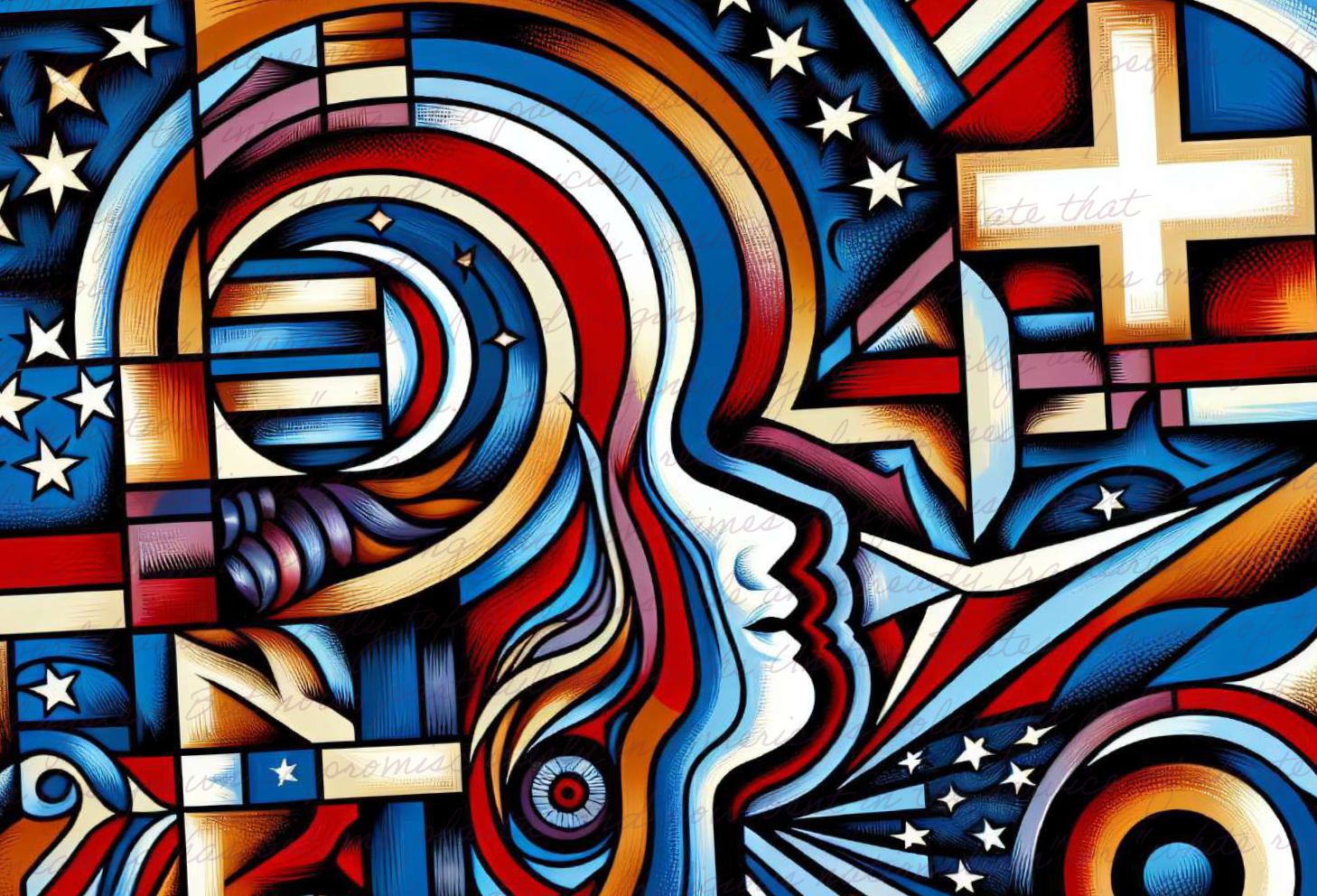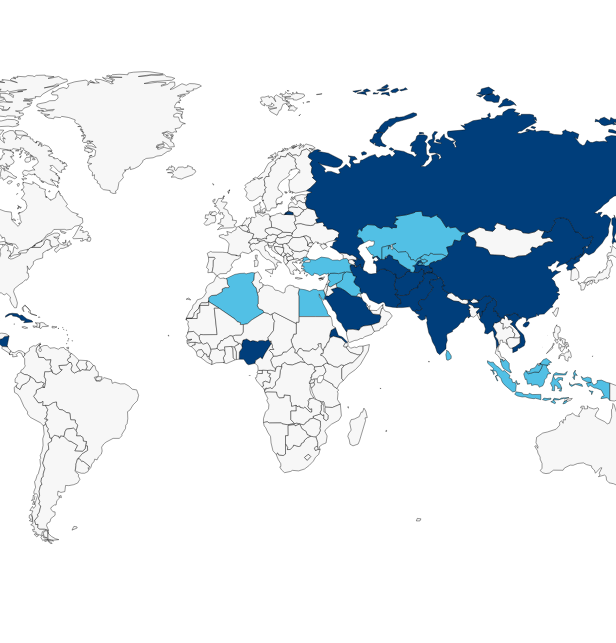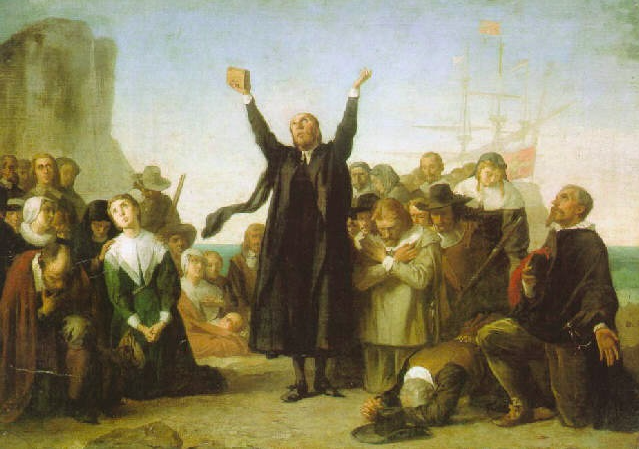By: Karen Taliaferro
Smuggled beneath the rancor over the recent Obergefell decision is an entirely distinct, yet more profound, disagreement that has little to do with whether gay couples have a legal right to marry. It is a disagreement over what law is: whether it is something that is merely human or whether it answers to something higher than human beings. Our current popular understanding of liberalism, including human rights and the rule of law, assumes that law is ultimately human fiat; that is, law is what the legislatures craft and the courts interpret. But this is a relatively recent notion in social and political history, and I argue that it is a misguided one, especially when we consider the implications for the freedom of conscience and religion. This conception of law leaves the door wide open for an all-powerful state against which the conscience of an individual is quite weak. In other words, if the only source of authority in a given society is the human law, then the state’s power is limitless. This is Hobbes’ point in Leviathan: Justice is what the sovereign declares it to be, and the sovereign is (and must be) the state.
In spite of this, we tend to assume—somewhat incoherently given our governing conception of law as a human entity alone—that there is some higher standard by which we judge our laws. We are fond of declaring that “an unjust law is no law at all,” even as we leave unspoken the quintessentially religious sources of that dictum (namely, St. Augustine, via St. Thomas Aquinas via Martin Luther King, Jr.). But what is this higher standard? Liberalism itself? This ends in circular reasoning. A constitution? Absolutely, but what informs the principles of the constitution? For it, too, is ultimately a human law.
What about divine law, to which religious people—including, notoriously, religious extremists—so often recur? Perhaps, but if so, then can we really have a robust religious freedom? For if there is a divine law above a society’s human law, then all members of the society, whether they adhere to the official version or not, are on some level governed by it. This can be quite benign—for example, state-sponsored religious charities for the poor—but it can also be rather oppressive—such as an official interpretation of religious law dictating that women cannot drive. Should anyone be ruled by a religious law to which they don’t adhere?
There is no easy way out of this conundrum. Either there is a higher standard by which we measure human law or there isn’t. If there isn’t, we have the Leviathan, the all-powerful state against which an individual is ultimately powerless. If there is, we have the advantage of religion as a mediating institution between the individual and the state, but we also open ourselves up to the rule, or at least political and social influence, of religious law in highly illiberal ways.
But there is a third way, the way of the natural law. This way conceives of law not as either a monolithic human law, nor as antagonistic forms of divine law and human law, but rather as unified yet tripartite, as comprising distinct but related human, divine, and natural elements of law. In this schema, we view the ends of things and of people as given by nature, and as knowable to all humans, regardless of creed or lack thereof; this is the natural law. Human law is free to declare on a wide range of human life and activity, responding to the changing needs of the times as they concern the protection and promotion of those ends, but it is not left free to define these ends entirely. By the same token, divine law is respected as the articulation of God or the Supreme Being, whose will, force, and, we may hope, love and goodness underwrite all of creation, the natural law, and ultimately, all just human law. But to take this divine law and interpret it to contravene these naturally-given ends of humanity, society, science, and artifice signals a misguided interpretation of that law. This is because the divine law must exist in harmony with natural law as much as human law must exist in harmony with natural justice. In other words, human, natural, and divine law must each be interpreted (or in the case of human law, crafted) in light of the others.
This tripartite conception of law is hardly a stranger to history. Sophocles hinted at it inAntigone: there was, in addition to the gods’ law of burying the dead and the king’s law forbidding it, a justice, the origins of which we know not but which no human law could override. Importantly, Antigone chose to ignore this higher justice and cling instead to the gods’ inscrutable will, and the result was tragedy. The Christian tradition of natural law is well known, but it is less commonly acknowledged how useful natural law has been, since the Roman Empire, in promoting a universal human right to religious freedom. The late-second century theologian Tertullian, and following him, Lactantius, relied on arguments based on nature to articulate a “human right” (humani iuris) to “religious freedom” (libertatem religionis). Finally, within the Muslim tradition, Averroës (Ibn Rushd) theorized an “unwritten law” (sunan ghair al-maktuba) that was known, or knowable, to all by nature. This is a law that stands not in opposition to but beside the sharia and which guides, or at least ought to guide, the interpretation of all law.
When the rule of human law alone leads us down a Hobbesian path of an all-powerful Leviathan, but the notion of a competing sovereignty of divine law leaves us anxious about muftis and priests standing on equal footing with judges and senators, then, we would do well to return to this richer conception of law. It is no panacea, but we may nevertheless hope to find in it a common vocabulary for dealing with the seemingly intractable conflicts of our perceptions of human law and divine law that we find at the heart of the need for religious freedom.
Karen Taliaferro is a postdoctoral research fellow at the James Madison Program in American Ideals and Institutions at Princeton University.
This piece was originally authored on August 10, 2015 for the Religious Freedom Project at Georgetown’s Berkley Center for Religion, Peace, and World Affairs.
THE RFI BLOG

Myths of Religious Nationalism in America and Abroad

France’s Olympic Hijab Ban Violates International Law And Exacerbates Tensions

RFI Briefs USCIRF on Lessons from 25 Years of U.S. Designating Religious Freedom Violators

Thought Police: Protecting the People from Prayer

A Religious “Delaware”: Establishing a State Haven for Religious Corporations
CORNERSTONE FORUM

Challenges to Religious Freedom in Iraq and the Critical Need for Action

Public Bioethics & the Failure of Expressive Individualism

Religious Liberty in American Higher Education

Scotland’s Kate Forbes and the March of Secularism


